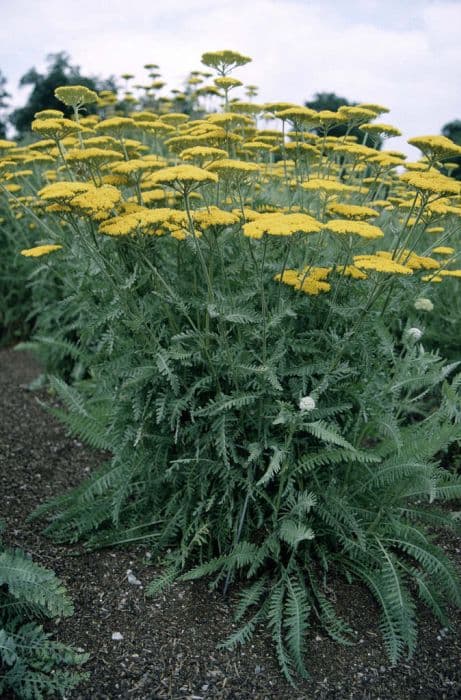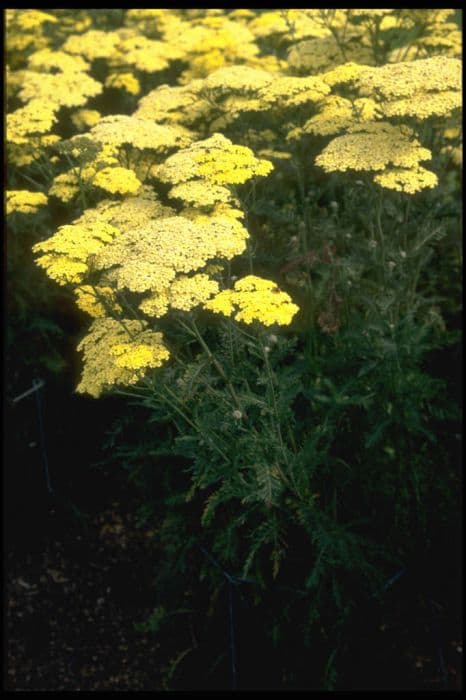Blazing Star Liatris spicata

ABOUT
Commonly known as blazing star, this plant exhibits a striking vertical presence with a clustered array of slender, grass-like leaves at its base. As the eye travels upward, one notices a tall, erect stem that culminates in a dense, spike-like column densely packed with tiny, fluffy, bottlebrush-like flowers. These blooms are vibrant and often display a rich purple or magenta hue, although some varieties may present blooms in pink or white. The flowers tend to open from the top down, creating a captivating display of color for several weeks in late summer to fall. Overall, the blazing star has a feathery and textural appearance, which adds a unique vertical element to any garden space. The plant is not only visually striking, but it also attracts a variety of pollinators such as butterflies and bees, thanks to its nectar-rich flowers. This perennial is both drought tolerant and hardy, sporting a resilience that makes it a favorite among garden enthusiasts seeking a low-maintenance yet beautiful addition to their landscapes.
About this plant
 Names
NamesFamily
Asteraceae
Synonyms
Dense Blazing Star, Prairie Gay Feather, Marsh Blazing Star, Spike Gayfeather, Button Snakeroot
Common names
Serratula spicata, Lacinaria spicata, Liatris callilepis.
 Toxicity
ToxicityTo humans
Blazing star (Liatris spicata) is not known to be toxic to humans. There are no commonly reported adverse effects or symptoms of poisoning linked to the ingestion of parts of this plant. However, as with any plant, individual allergies or sensitivities may exist, and it is generally advised to avoid eating parts of ornamental plants due to potential unexpected reactions or the presence of applied pesticides.
To pets
Blazing star (Liatris spicata) is not considered toxic to pets, including cats and dogs. It is not listed among plants that are known to cause poisoning in pets. Therefore, ingestion of this plant should not lead to any significant symptoms of toxicity. However, individual animals may have different sensitivities, and ingestion of non-food plants can sometimes cause mild gastrointestinal upset regardless of toxicity. It is always a good practice to monitor your pets and prevent them from ingesting plants not intended for consumption.
 Characteristics
CharacteristicsLife cycle
Perennials
Foliage type
Deciduous
Color of leaves
Green
Flower color
Purple
Height
2-4 feet (60-120 cm)
Spread
1-2 feet (30-60 cm)
Plant type
Herb
Hardiness zones
3-9
Native area
North America
Benefits
 General Benefits
General Benefits- Attracts Pollinators: Liatris spicata is known to attract butterflies, bees, and other beneficial insects which are vital for pollination.
- Drought Tolerant: Once established, it can tolerate periods of drought, making it suitable for xeriscaping or low-water gardens.
- Aesthetic Appeal: With its tall spikes of purple flowers, it adds vertical interest and vibrant color to garden beds and landscapes.
- Easy to Grow: It is generally low maintenance and adaptable to a variety of soil conditions, requiring minimal care once established.
- Deer Resistant: The plant is not a favorite of deer, which can help prevent damage to gardens in areas where deer are prevalent.
- Long Blooming: The flowering period extends through summer and into fall, providing long-lasting color in the garden.
- Cut Flowers: The spikes make excellent cut flowers for arrangements, adding height and structure.
- Native Plant: As a native to North America, it can help maintain local biodiversity and support native ecosystems.
 Medical Properties
Medical Properties- Diuretic: Liatris spicata has been traditionally used for increasing urine output.
- Anti-inflammatory: The plant may contain compounds that help reduce inflammation.
- Carminative: It is believed to help alleviate digestive issues like gas and bloating.
- Sudorific: It can induce sweating, which has been considered beneficial in certain health situations.
- Expectorant: It has been used to help expel phlegm from the respiratory system.
- Antiseptic: The plant may have mild antiseptic properties that make it helpful for cleaning wounds.
 Air-purifying Qualities
Air-purifying QualitiesThis plant is not specifically known for air purifying qualities.
 Other Uses
Other Uses- Liatris spicata, commonly known as Blazing Star, can serve as a natural sponge due to its fibrous root system, which can absorb water and help prevent soil erosion.
- The long-lasting blooms of the Blazing Star make it an excellent choice for dried floral arrangements, maintaining their color and form for extended periods.
- The tall and striking appearance of the Blazing Star is used by landscapers to create vertical accents in garden design, drawing the eye upwards and creating depth.
- Blazing Star can be used in companion planting to attract pollinators like bees and butterflies, which benefits the pollination of nearby fruit and vegetable crops.
- Native American tribes have historically used the Blazing Star as a tool to communicate messages across long distances by arranging the flowers in patterns or lines.
- In certain regions, the seeds of the Blazing Star are added to birdseed mixes to attract a variety of birds that feast on its seeds.
- Blazing Star's stems can be woven or braided into baskets and other crafts thanks to their strength and flexibility when harvested before flowering.
- The plant can be used in environmental education programs as an example of a native prairie species, promoting the importance of conservation and biodiversity.
- Gardeners can use the dense clumps of Blazing Star as a natural privacy screen or to border pathways, providing a boundary that is both practical and aesthetically pleasing.
- Artists sometimes incorporate the vibrant flowers of the Blazing Star into botanical art and photography, capturing its unique form and color.
Interesting Facts
 Feng Shui
Feng ShuiGayfeather is not used in Feng Shui practice.
 Zodiac Sign Compitability
Zodiac Sign CompitabilityGayfeather is not used in astrology practice.
 Plant Symbolism
Plant Symbolism- Happiness and joy: Liatris spicata, commonly known as Blazing Star, is often associated with feelings of joy and happiness due to its bright purple spikes that add a pop of color to gardens and natural settings.
- Pride: The tall and upright nature of the Blazing Star's flower spikes is seen as a symbol of pride and standing tall, representing self-confidence and personal strength.
- Attraction and charisma: With its showy flowers and ability to attract butterflies and bees, the Blazing Star is often linked to attraction and charisma, suggesting a magnetic personality or object of desire.
- Healing and restoration: Native Americans once used Blazing Star medicinally, so it carries connotations of healing and physical restoration.
 Water
WaterFor the Blazing Star, which is the most common name for Liatris spicata, watering should be done thoroughly, allowing the water to soak deep into the soil to encourage deep root growth. Early morning watering is recommended, and providing one to two inches of water per week is sufficient. During the growing season, especially if rainfall is less than an inch per week, it's important to keep the soil consistently moist but not waterlogged. Over the winter, watering can be reduced significantly, as the plant is dormant and excess water can promote root rot. Always check the soil moisture before watering to ensure the plant does not sit in soggy conditions.
 Light
LightBlazing Star thrives in full sun conditions, which equates to at least six hours of direct sunlight each day. Planting in a spot that receives ample sunlight throughout the day will yield the best flowering results. If possible, select a location that enjoys morning light, which is less harsh than the afternoon sun, to reduce the risk of leaf scorch on hot summer days.
 Temperature
TemperatureBlazing Star does well in a wide range of temperatures but prefers conditions that stay between 60 and 70 degrees Fahrenheit as the ideal growing range. They are hardy and can tolerate winter cold down to about -20 degrees Fahrenheit. However, high temperatures over 85 degrees Fahrenheit for extended periods can stress the plant. It's important to ensure that Liatris spicata has adequate water and mulch to help insulate the roots during temperature extremes.
 Pruning
PruningPruning the Blazing Star mainly involves deadheading spent flowers to encourage additional blooming and to maintain a tidy appearance. Pruning should be done after flowering, typically in late summer or early fall. You can also cut back the foliage to the ground in late winter or early spring before new growth starts, to make room for fresh shoots.
 Cleaning
CleaningAs needed
 Soil
SoilFor Blazing Star, a well-draining soil mix that mimics its native habitat is ideal. Mix equal parts of garden soil, sand, and peat or compost to provide richness and improve drainage. Blazing Star prefers a soil pH of 6.0 to 7.0.
 Repotting
RepottingBlazing Star should be repotted every 2 to 3 years, or when you notice that the plant has outgrown its current container. Refresh the soil mix and choose a pot that is slightly larger.
 Humidity & Misting
Humidity & MistingBlazing Star thrives in average humidity conditions typical of outdoor environments but does not require any special humidity adjustments when grown indoors.
 Suitable locations
Suitable locationsIndoor
Place Blazing Star in a sunny spot; water when the topsoil dries.
Outdoor
Plant Blazing Star in full sun, ensure soil drains well.
Hardiness zone
3-9 USDA
 Life cycle
Life cycleLiatris spicata, commonly known as Blazing Star or Gayfeather, begins its life as a hardy perennial from a corm, which is a swollen underground stem acting as a storage organ. In spring, new shoots emerge from the corm, leading to a basal rosette of narrow, grass-like leaves and the development of tall, erect flowering stems that can reach up to 5 feet in height. Throughout the summer, the plant produces a spike of tightly clustered, purplish-pink flowers that bloom sequentially from the top down, attracting pollinators such as butterflies and bees. After pollination, the flowers produce dry, one-seeded fruits called achenes that are dispersed by wind or wildlife. Once the growing season is over and the plant has released its seeds, the foliage dies back to the ground, and the corm lies dormant throughout the winter. The cycle restarts the following spring, with the corm producing new shoots once again.
 Propogation
PropogationPropogation time
Late summer
The popular method for propagating the plant commonly known as Gayfeather, or Liatris spicata, is through division of corms or tuberous roots. This is typically done in the spring, just as the plants are emerging. To propagate Gayfeather this way, carefully dig up the established clump and gently separate the corms from the root mass. Each division should have at least one growth point or shoot. Replant the divisions immediately, setting them at a depth of about 3 inches (7.62 centimeters) and spaced approximately 12 to 15 inches (30.48 to 38.1 centimeters) apart to allow for ample growth space. Water the new plants well to help establish them. This method of propagation allows the gardeners to increase their stock of Gayfeather while maintaining the health and vigor of the parent plants.









